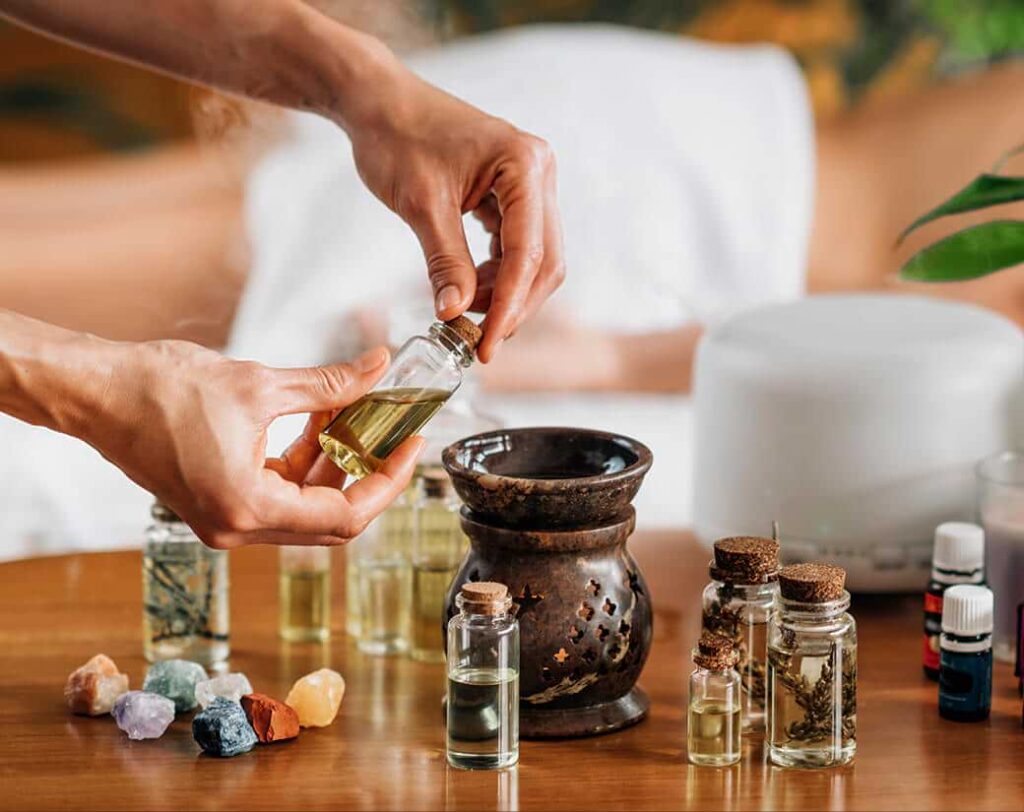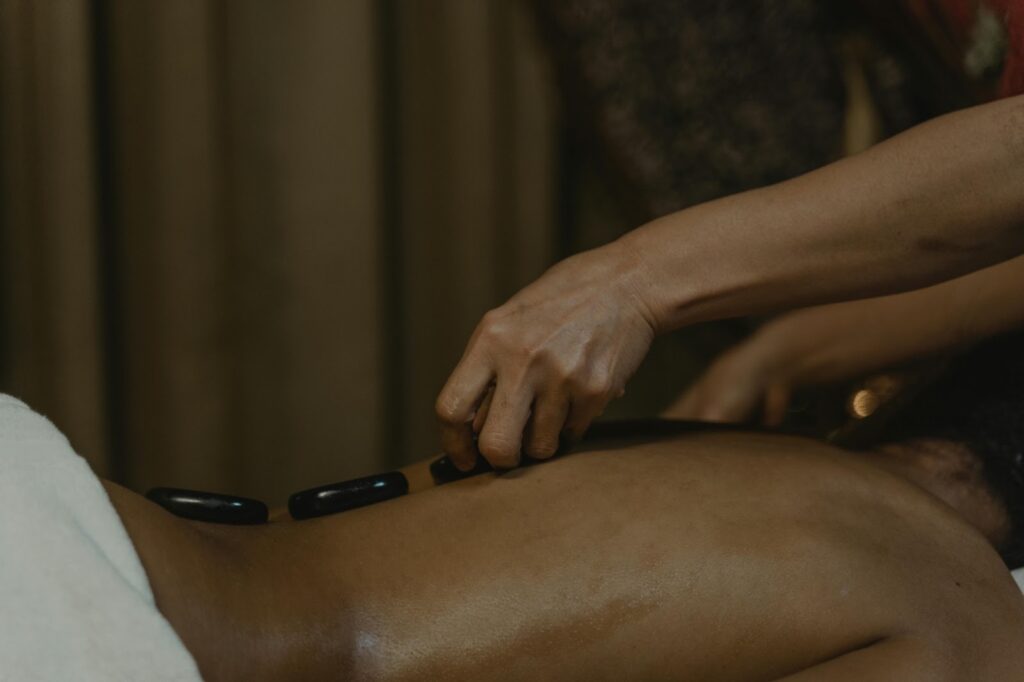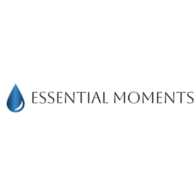Lymphatic Massage: Exploring Benefits & Potential Risks

Lymphatic massage is a gentle therapy aimed at stimulating the flow of lymph fluid in the body. This helps with detoxification, reduces swelling, and boosts immunity. In this article, you’ll learn about the benefits of lymphatic massage, how it works, and what to expect during a session. What Is Lymphatic Drainage Massage? Manual lymphatic drainage (MLD) is a distinct variety of lymphatic massage that involves gentle, rhythmic hand strokes to promote the movement of lymph fluid within the network of lymphatic vessels. This technique supports the function of the lymphatic system—a complex network made up of numerous critical components, each of which plays an important part in maintaining the body’s fluid balance and immunological function. By filtering waste and toxins through the lymph nodes, the lymphatic system plays a crucial role in detoxification, helping you to sustain a healthy internal environment. How do I know when to get Professional Lymphatic Drainage? Here are several major indicators that you need expert lymphatic massage treatment: Recurrent Infections Persistent Swelling and Edema Chronic Conditions such as Lymphedema and Fibromyalgia Headaches Digestive Issues Fatigue Skin Changes How important is early detection of Lymphatic Congestion? By working with healthcare experts from the beginning, you can ensure the development of a comprehensive treatment plan that addresses all aspects of your lymphatic health, including underlying causes and supportive therapies. Early discovery is crucial for treatment intervention, reducing the chance of complications such as: Fatigue Edema Chronic Swelling Fibrosis Skin Infections Swollen Lymph Nodes in Your Neck How Does Lymphatic Massage Work? Lymphatic massage utilizes a range of methods that incorporate gentle, rhythmic pressure to boost lymph circulation and support the body’s detoxification process. Developed in the 1930s by Dr. Emil Vodder, manual lymphatic drainage (MLD) utilizes precise, rhythmic hand movements to stimulate lymphatic flow through the vessels and nodes. These spiral-like strokes help to reduce swelling and edema, particularly after surgery or injury. By activating the lymphatic system, MLD increases the immunological responses, aids in infection prevention, and promotes the efficient elimination of waste and toxins. Studies have shown that managing post-traumatic edema is crucial for preventing secondary injury and promoting faster recovery in patients with orthopedic injuries, but further research is needed to determine its effectiveness in improving patient and disease-oriented outcomes for orthopedic injuries. More studies conclude that while preliminary evidence and animal studies support the potential benefits of manual lymphatic drainage techniques (MLDTs) in reducing edema and muscle damage markers in athletic injuries, high-quality clinical trials are needed to establish definitive guidelines for their use in sports medicine and rehabilitation. Additional research supports findings from a systematic review conducted to evaluate the effectiveness of massage in fibromyalgia. The review suggests that myofascial release provides significant benefits, particularly in reducing pain, anxiety, and depression. At the same time, manual lymphatic drainage may be more effective than connective tissue massage for stiffness, depression, and quality of life. Are There Any Risks or Complications of Lymphatic Drainage Massage? Lymphatic massage is generally considered a safe and effective method for managing lymphedema. However, it may not be suitable for everyone. You should avoid it if you have: Deep Vein Thrombosis Heart Disease Blood Clots Infection Stroke Kidney failure Health Benefits of Lymphatic Massage 1. Reducing Swelling and Inflammation Manual lymphatic drainage (MLD) is particularly effective in reducing swelling and inflammation, making it a go-to treatment for conditions such as lymphedema, arthritis, and post-surgical rehabilitation. Massaging areas without swelling creates space for congested lymph fluid to flow, reducing swelling. This technique can also help minimize facial puffiness and improve facial contours, giving you a more refreshed appearance. 2. Boosting Immune System Lymphatic massage is known for its significant role in fortifying the immune system. It improves the body’s ability to absorb and transport lymph fluid, elevating the immune response’s efficacy. During Manual Lymph Drainage (MLD), specific hand techniques exert pressure on the skin, helping to expel toxins and bacteria and bolster the body’s inherent defensive systems. 3. Enhancing Post-Procedure Healing Manual lymphatic drainage (MLD) offers significant advantages following cosmetic surgeries. It aids in recuperation, diminishes discomfort, and promotes better blood flow. It becomes a vital component of care after a procedure by fostering quicker healing and minimizing the likelihood of developing postoperative lymphedema. 4. Detoxification Lymphatic drainage massage helps eliminate waste and toxins from the body, resulting in a cleaner interior environment. This detoxification process reduces the strain on the liver and kidneys, allowing them to operate more effectively. 5. Improved Circulation This massage technique increases blood flow, supplying vital nutrients and oxygen to tissues while eliminating metabolic waste. Improves circulation benefits, cardiovascular health, and energy levels. 6. Relaxation and stress relief This massage’s soothing, rhythmic motions foster a state of relaxation and well-being. It can assist to reduce stress, improve sleep quality, and boost mental clarity. Self-Lymphatic Drainage Techniques Self-lymphatic drainage techniques can be a great way to maintain your lymphatic health between professional sessions. However, it’s essential to consult a healthcare provider before attempting these techniques, especially if you have underlying health conditions. The goal is to ensure that self-drainage is safe and appropriate for your specific situation. Self-administered lymphatic drainage methods require the application of gentle pressure alongside particular maneuvers aimed at stimulating the flow of lymph fluid. These techniques encompass soft, circular movements using one’s fingertips, gliding strokes oriented towards the lymph nodes, and progressing from the body’s outer extremities inward toward its core. To preserve their effectiveness, refrain from applying oils or lotions while performing these massages. Integrating Profesional Treatments with Self-Care By combining professional treatments with your self-care practices, you can enhance the overall effectiveness of both approaches. Here are some examples: 1. Hydration & Nutrition Drink plenty of water to keep lymph fluid moving efficiently. Incorporate anti-inflammatory foods like turmeric, ginger, and leafy greens. Consume a diet rich in fruits, vegetables, and lean proteins to support detoxification.
What is Aromatherapy Massage: Benefits & Techniques Explained

Aromatherapy massage combines the physical benefits of professional massage with the therapeutic effects of essential oils, helping to relieve stress, improve mood, and address various physical ailments. The properties of essential oils, when administered during an aromatherapy massage, can be absorbed through the skin, inhaled, or diffused. This article will guide you through what aromatherapy massage is, how it works, and its many benefits and techniques. Benefits of Aromatherapy Massage Aromatherapy massage is designed to cultivate a serene mindset while promoting overall well-being. It merges the nature of tactile therapy with aromatic essential oils, known for their ability to uplift the spirit and address physical or psychological concerns. I’ve included the foremost benefits of this therapeutic practice for you below: Decreases muscle tension When you receive an aromatherapy massage, molecules from essential oils penetrate your skin and enter your circulation, contributing to healing effects. The efficacy of this method is amplified by specialized massage techniques that improve blood flow and transport these botanical essences more effectively. Additionally, inhaling the scent of essential oils plays a critical role in influencing your physical and emotional state. When you breathe in essential oil aromas, odorant molecules travel through the olfactory nerves to the brain’s limbic system, which is responsible for emotions, mood regulation, and memory. Which Conditions Aromatherapy Massage Can Help With?Aromatherapy massage has shown benefits for the following conditions: What Are Essential Oils & Do They Really Work? Essential oils are volatile chemicals that enter the body primarily through skin absorption or nasal inhalation. In addition, they can work through oral administration. Extracted directly from flowers, resin, leaves, bark, fruit, or ruts of a plant or tree, these potent oils bring the essence of nature straight to you. Essential oils have been used medicinally for thousands of years in a variety of nonconcentrated forms. Their true power lies in addressing physiological disharmony and helping your body heal itself. Some essential oils have scientifically backed benefits, but their efficacy varies depending on the oil, its application, and the condition being treated. Massage has been a powerful tool for promoting relaxation and overall well-being since ancient times. When combined with essential oils, it becomes even more effective. The Science-Backed Benefits of Aromatherapy Massage A 2020 study demonstrated the promising results of inhalation and massage aromatherapy in reducing anxiety. When integrated into your regular massage practices, these precious essential oils contribute significantly to elevating your overall health. Studies have also shown that aromatherapy massage can be beneficial for patients being treated for cancer. Cancer patients receiving weekly aromatherapy massages experienced significant reductions in stress and anxiety, accompanied by notable improvements in immune system functioning. Most Common Essential Oils Used in Aromatherapy Massage Choosing the Right Essential Oils for Your Massage Session Integrating aromatherapy into various massage techniques can significantly boost their healing benefits. Whether you opt for the smooth, flowing strokes of Swedish Massage, the more forceful manipulation characteristic of Deep Tissue Massage, or the comforting heat involved in a Hot Stone Massage, essential oils are key to augmenting your session and delivering extra advantages. Depending on your chosen type of massage and your requirements, different essential oils can be used to customize each experience. Aromatherapy Oils for Relief and Recovery 1. Muscle Ache Relief Lavender and peppermint essential oils are natural remedies for discomfort and soreness after a rigorous training session or when athletes are involved. Lavender is renowned for its calming and anti-inflammatory properties, helping to relax tense muscles and promote recovery. With its cooling and analgesic effects, Peppermint reduces pain and invigorates tired muscles. A blend of these oils and professional massage may provide a powerful solution for easing physical strain and enhancing post-workout recovery. 2. Inflammation Inflammation is the body’s natural response to injury, infection, irritation, bacteria, and anything that your body sees as a threat. However, when it becomes chronic, it can contribute to a range of health issues, including joint pain, autoimmune conditions, and skin disorders. Regarding muscle damage and inflammatory markers post-exercise, a 2018 study has identified massage therapy as the most effective method for reducing soreness and muscle fatigue, while compression-based methods and cold water immersion effectively alleviate fatigue. Combining massage’s therapeutic benefits with essential oils’ healing and revitalizing effects creates a powerful synergy that enhances holistic health and well-being. Here are some anti-inflammatory essential oils that, in combination with a carrier oil, can effectively reduce inflammation and promote healing: Eucalyptus Ginger Clove Lavender Oregano Roman Chamomile Thyme Turmeric Tea-Tree 3. Menopause Symptoms Menopause is a normal part of aging for a woman and defines the official end of fertility and the menstrual cycle. The transition can bring symptoms such as joint and muscle discomfort, hot flashes, night sweats, etc. After menopause, women become more susceptible to certain health conditions, making it essential to stay in good shape through a balanced diet, adequate sleep, proper hydration, and sufficient Vitamin D to support bone health. In addition to these lifestyle practices, studies have shown that aromatherapy can play a supportive role by reducing depressive symptoms in menopausal women. Recommended essential oils for aromatherapy massage to alleviate menopause symptoms: Rose geranium Lavender Rose Jasmine 4. Osteoporosis Osteoporosis occurs when the creation of new bone doesn’t keep up with the loss of old bone and they are more likely to fracture. Preventing osteoporosis involves maintaining a healthy lifestyle with weight-bearing exercises, adequate calcium and vitamin D intake, and avoiding risk factors that contribute to bone loss. Essential oils that protect from bone loss: Sage Pine Eucalyptus Rosemary How do I choose the right Carrier Oils? Essential oils are quite concentrated and can lead to skin irritation if not properly diluted, which is why carrier oils are vital when performing aromatherapy massages. Some of the most favored carrier oils for this purpose include: Coconut oil is renowned for its anti-inflammatory properties, healing support, and role in boosting collagen production. All contributing to overall skin health. Sweet almond oil
Hot Stone Massage Explained: A Soothing Therapy for Mind & Body

Hot stone massage offers an elegant solution for stress relief. It also soothes anxiety and helps recalibrate the nervous system. By creating a tranquil environment that encourages mental and physical decompression, hot stone massage transforms a simple treatment into a rejuvenating experience of holistic well-being. What is a Hot Stone Massage? Hot stone massage employs smooth, heated basalt stones to help you relax muscles and alleviate tension. These stones are typically placed on specific points of your body, also known as Chakras. They are found at points that run up the body from the base of the spine to the top of the head and can be located on the front and back of the body. The temperature of the stones is advised to be between 130 and 135 degrees Fahrenheit (50 and 57 degrees Celsius). The primary health advantages of hot stone massage include unmatched relaxation and deep muscle penetration. This is achieved through the combination of hot stone therapy and massage techniques such as the following: Top Benefits of Hot Stone Massage 1. Improve Sleep Quality Hot stone massage can significantly improve your sleep quality due to its deep relaxation effects. A 2024 study explored massage interventions, specifically slow-stroke back and hot stone techniques, to mitigate sleep disruptions among orthopedic surgical patients. The findings demonstrated significant potential for enhancing sleep quality in the postoperative period. Also, a 2019 study has shown how hot stone massage therapy might improve sleep quality for individuals on maintenance hemodialysis. In the trial, 60 participants received 12 sessions of basalt stone massage. The results showed a significant boost in sleep quality, highlighting its powerful impact on restorative rest. 2. Pain Relief One of the best things about a hot stone massage is that it can help relieve pain, which is something you’ll really appreciate if you have chronic aches. The heat from the stones can help alleviate chronic pain conditions like arthritis and backaches. As your muscles loosen, stubborn knots start to release, making it easier to work out tension and leaving you feeling more relaxed and refreshed. Massage has been known for centuries as an exceptional relaxation therapy, and even a brief 20-minute session can provide great relief. A 2025 study found that a simple massage can significantly reduce pain, tension, and anxiety in patients recovering from abdominal colorectal surgery. 3. Stress Reduction When you experience a hot stone massage, you’ll discover a powerful way to melt away stress and enhance your well-being. Studies have shown how massage therapy offers a potential stress-reduction strategy for housewives, indirectly supporting breast cancer prevention through immune system enhancement. The meditative state induced by the massage, combined with the therapist’s touch, creates a sensory experience that encourages the release of endorphins. This blend of physical and mental relaxation improves anxiety relief and stress levels. Studies have also shown that massage therapy lowers stress hormones (cortisol) and increases feel-good chemicals (serotonin and dopamine), improving mood and supporting overall health. 4. Mood Enhancement When stress weighs you down, your body’s natural defenses can suffer, but that’s where massage therapy comes to your rescue. Hot Stone Massage is an excellent immunity booster. During your session, you’ll feel your nervous system shift into a state of deep relaxation, clearing mental fog and melting away tension. Combining warmth and skilled massage techniques triggers your body to release endorphins, creating a profound sense of peace that stays with you long after your session. The benefits of massage therapy for women with breast cancer focus on improving mood, reducing stress, and boosting immune function, including increased dopamine, serotonin, and NK cell levels. 5. Improved Circulation The stones’ therapeutic effects can enhance blood flow to specific areas, reducing inflammation and improving overall circulation. This is achieved through vasodilation, where blood vessels expand, allowing for increased blood flow to specific areas of the body. This process delivers essential nutrients and oxygen to muscles and tissues, facilitating healing. There are a variety of types of massage that can be used to improve circulation in combination with hot stones, including: Who Can Benefit from Hot Stone Massage? Hot stone massage is beneficial, particularly if you are suffering from chronic pain conditions such as fibromyalgia and arthritis. Also, if you are experiencing high stress levels, insomnia, or muscle discomfort and tension, you can find relief through this therapeutic technique. The warmth of the stones helps to relax muscles and ease tension, making hot stone massage therapy ideal for those with muscle stiffness and tightness. Aromatherapy may enhance the benefits of hot stone massage therapy. Preparing for Your Hot Stone Massage Session Proper preparation is essential for a comfortable and effective hot stone massage session. Here are some tips to have in consideration prior to your hot stone massage session: Eat Light and Stay Hydrated – Before your massage, make sure you have a light meal or snack and drink water. Arrive Early – Plan to arrive 5 to 10 minutes in advance to prepare yourself. Dress Comfortably – Wear loose, comfortable clothing or consider a bathrobe for ease and relaxation. Remove Jewelry – Take off any accessories to avoid discomfort during the session. Communicate with Your Therapist – Always start with an open conversation with your therapist to discuss your preferences and needs for a personalized experience. Contraindications for Hot Stone Massage While hot stone massage may provide you with many benefits, it’s important to understand the potential risks and necessary precautions before booking a session. Skin sensitivity is a critical factor to consider when receiving a hot stone massage. If you suffer from conditions like eczema or sunburn, you may find the heat from the stones uncomfortable and potentially irritating. Certain medical conditions require extra caution when considering hot stone massage. Your healthcare provider should be consulted before receiving a hot stone massage for any medical condition, such as deep vein thrombosis or treatments like radiation or chemotherapy. Prioritizing safety and personal health by

